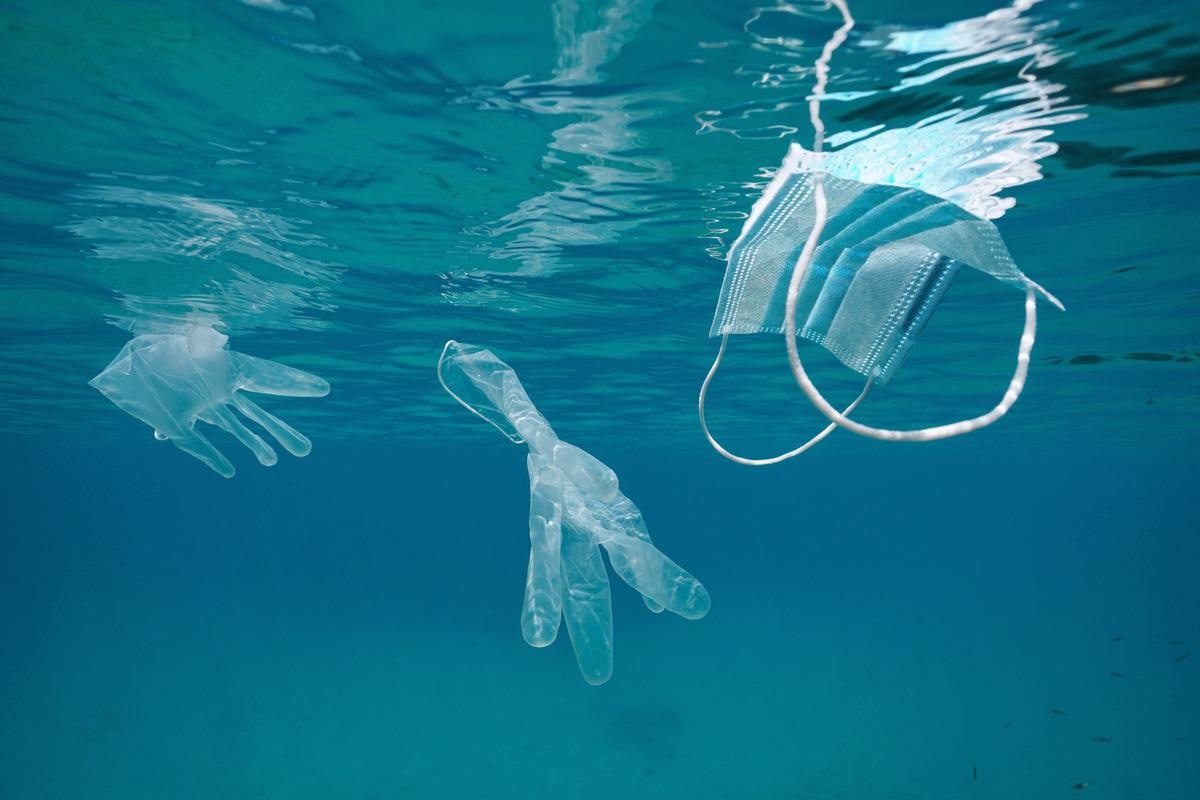A recent study published in the Environment Systems and Decisions journal assessed the impact of coronavirus disease 2019 (COVID-19)-related personal protective equipment (PPE) on aquatic ecosystems and fauna.
 Study: Prevalence of Covid-19 personal protective equipment in aquatic systems and impact on associated fauna. Image Credit: Damsea/Shutterstock
Study: Prevalence of Covid-19 personal protective equipment in aquatic systems and impact on associated fauna. Image Credit: Damsea/Shutterstock
Mismanagement of plastic waste has aggravated the amount of global microplastic (MP) litter in aquatic ecosystems. This global problem has been further exacerbated by the inefficient disposal of PPEs, which has indirectly contributed to the global plastic waste crisis.
Origins
COVID‑19-related waste is primarily generated from terrestrial sources. Various studies have reported on COVID-19 litter scattered in city centers, parks, and roads in China, USA, Nigeria, and Morocco. This litter could be transported into water bodies as a result of torrential rainfall and atmospheric deposition.
Hence, many developed countries have appointed infirmaries in certain regions designated for COVID-19-related waste disposal, thus ensuring that this waste does not enter the environment. In contrast, COVID-19 waste produced by the general public is often found unattended in public areas which eventually gets remobilized into the natural environment.
Chowdhury et al. 2021 noted that the unavailability of facilities to dispose of COVID-19-related waste in public areas can further increase the concentrations of PPE litter. Additionally, sites designated for COVID-19 waste disposal are often filled, thus further highlighting the need for better waste management.
Deposition of COVID-19 waste in oceans
Peng et al. 2021 reported that over 25,900 tonnes of COVID-19-related waste were discharged into oceans around the world, among which PPEs accounted for 1968.4 tonnes. Also, the study associated the elevated levels of COVID-19 waste found in 369 studied rivers with the population levels at that river mouth. This unmanaged waste found in the rivers can potentially be washed into oceans.
Notably, to date, Asian rivers have discharged the highest amounts of COVID-19 waste into the oceans and seas. Also, South American rivers were found to pollute the Southern oceans, whereas Europe and North American rivers polluted the Arctic Ocean.
Polypropylene (PP) and polyethylene (PE) present in facemasks could be responsible for their low densities and their ability to be displaced over great distances. Multiple studies noted that the levels of PPE discharged into the oceans were the highest in Asia, followed by Europe, North America, and South America, possibly due to the higher acceptance of facemasks in these continents.
A study also showed that a significant amount of COVID-19-related waste is displaced by rivers into the oceans which are further redistributed in the lower latitudes of rivers over a course of three years. Moreover, Peng et al. (2021) reported that the sedimentation and bleaching of COVID-19 waste are limited to river mouths, indicating that this waste displacement is restricted to coastal regions only.
Contribution of COVID-19 waste to MP levels
PPEs are primarily made of different types of artificial persistent polymers like PP and PE found in single-use masks, while low-density polyethylene (LDPE), polyvinyl chloride (PVC), nitrile rubber, and latex are used in hand gloves. These highly persistent PPEs require a long time to degrade, thus causing severe environmental consequences. Studies showed that these wastes can be broken down by environmental weathering processes into minute particles, thus giving rise to MPs.
N95, surgical, and normal masks were found to release MPs at steady rates while the release kinetics of these masks did not differ significantly from each other. A study showed that dry and wet states of the masks affected the release of fibers from facemasks. Also, seawater was noted to release more amounts of microfibres due to its high salinity and water density as compared to freshwater. Furthermore, the weathering of masks was attributed to the free radical chain reactions that result in photo-oxidation of the masks. On exposure to ultraviolet (UV) radiation, facemasks form carbonyl and hydroxyl groups which further result in the formation of ketonic groups.
Impact of COVID‑19 PPEs on aquatic fauna
Neto et al. (2021) reported the fatal incident of a Magellanic penguin found dead in Juquehy Beach, Brazil, after consuming a full protective facemask. This was the first study to report the direct impact of COVID-19 waste on aquatic animals. Moreover, PPE litter including gloves and face masks could potentially trap, entangle, or be consumed by animals, thus harming the animal in numerous ways.
Various studies have also reported the possibility of organisms drowning in water due to PPE entanglement. Also, the weathering of PPEs results in smaller particles that could be ingested by aquatic animals, resulting in poor health and hindrance to the animal’s natural performance.
Conclusion
The study showed how the mismanagement of COVID-19-related waste has significantly contributed to the level of MPs in water bodies. This aggravated MP pollution can potentially pose a fatal risk to the aquatic dwelling organisms. The team believed that the usage of more eco-friendly materials in PPEs can curb the negative impact of COVID-19 litter on the aquatic environment.